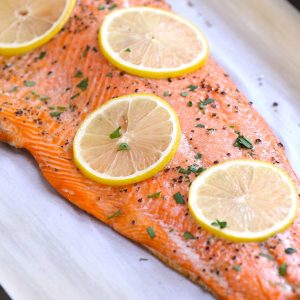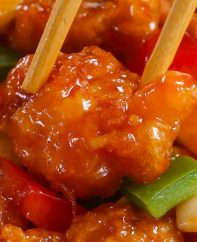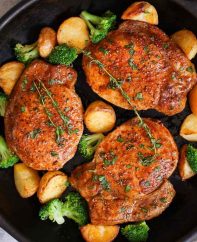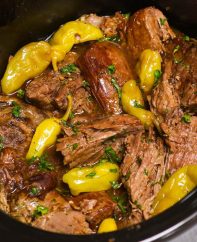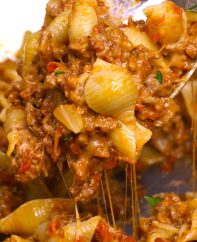Salmon Cook Temp
This post may contain affiliate links. Please read the disclosure policy.
Have you wondered about the best salmon cook temp to get moist and flakey fish? We’ve got your covered with how to cook salmon different ways and more importantly what temp to cook salmon so it doesn’t dry out!
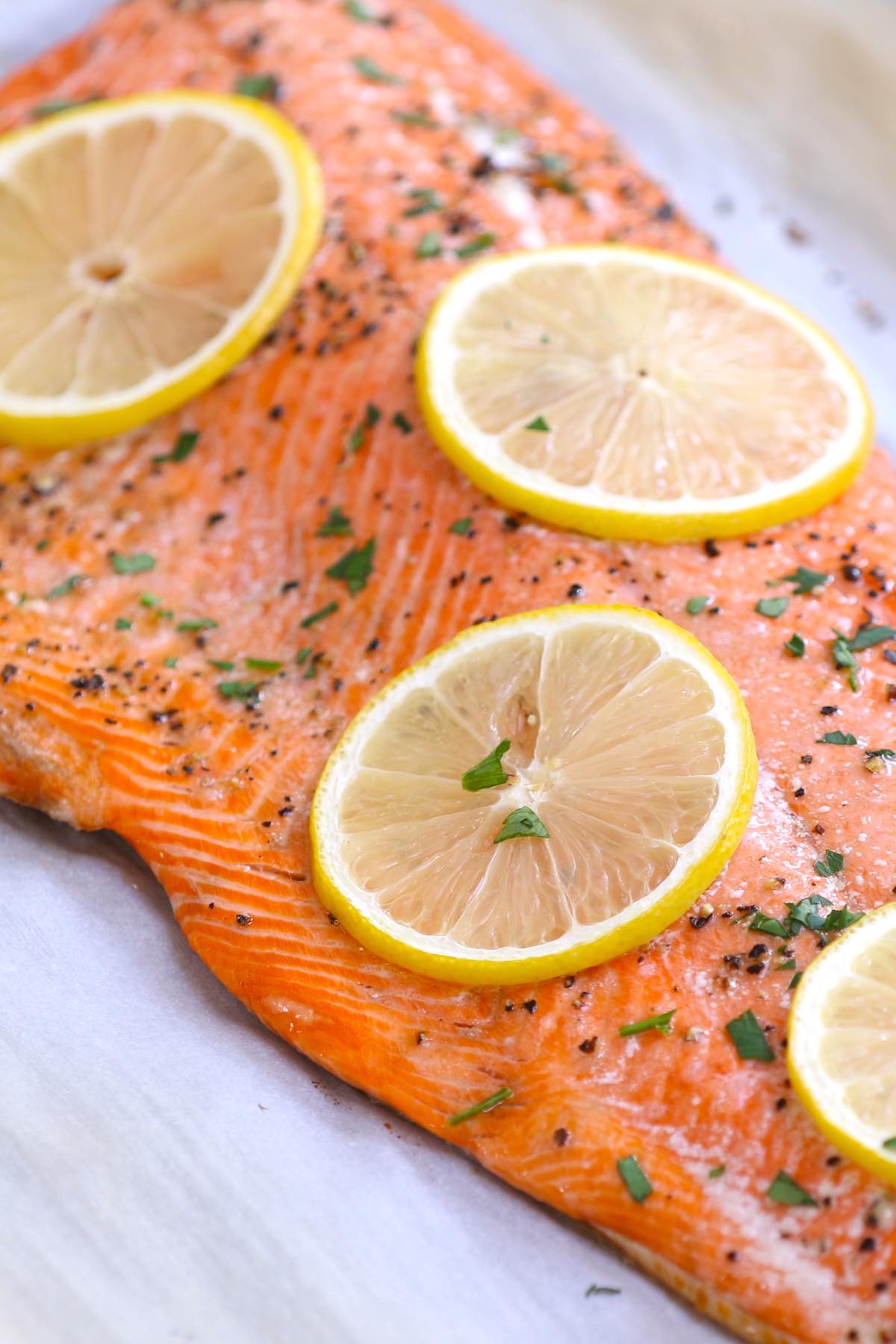
Salmon is a delicious fish protein with many health benefits. While you can prepare salmon using the oven, grill or stovetop, it’s quite easy to overcook. And that’s especially true for lean sockeye salmon fillets.
Here we’re covering everything you need to know, including which heat level to use and the best internal temperature when it’s done. With a few easy tips, you’ll be able to enjoy perfect salmon every time. So let’s get started!
Do You Cook Salmon on High or Low heat?
Salmon should be cooked over medium to medium-high heat. Any higher than that and the flesh start to char and contract, leading to dry and chewy fish. Lowering the flame slightly will produce juicier and more flavorful salmon.
What Internal Temperature Should Salmon Be Cooked To?
Salmon’s internal temperature should reach 145°F during cooking for safety reasons, according to the FDA. Note that the internal temperature will rise another 5 to 10°F while resting, especially when covered with foil or a plate to retain heat. Therefore, you can often reach the FDA guideline by removing from the heat at 135 to 140°F.
To measure the salmon cook temp, simply insert an instant-read thermometer into the center of the thickest part of the fish. Alternatively, you can use a dual-probe thermometer to monitor the entire time while cooking.
Can You Eat Salmon at 120 Degrees?
It’s no secret that many salmon lovers prefer medium-rare salmon cooked to an internal temp of just 120°F. While this level is below the published recommended minimums, I would consider it acceptable with the following caveats:
- the fish is very fresh with no fishy odour
- it’s from a reputable source
- you are not pregnant or in a higher risk category
Remember that many of us eat sushi containing uncooked salmon frequently! It’s really a matter of balancing enjoyment of food with the potential risks.
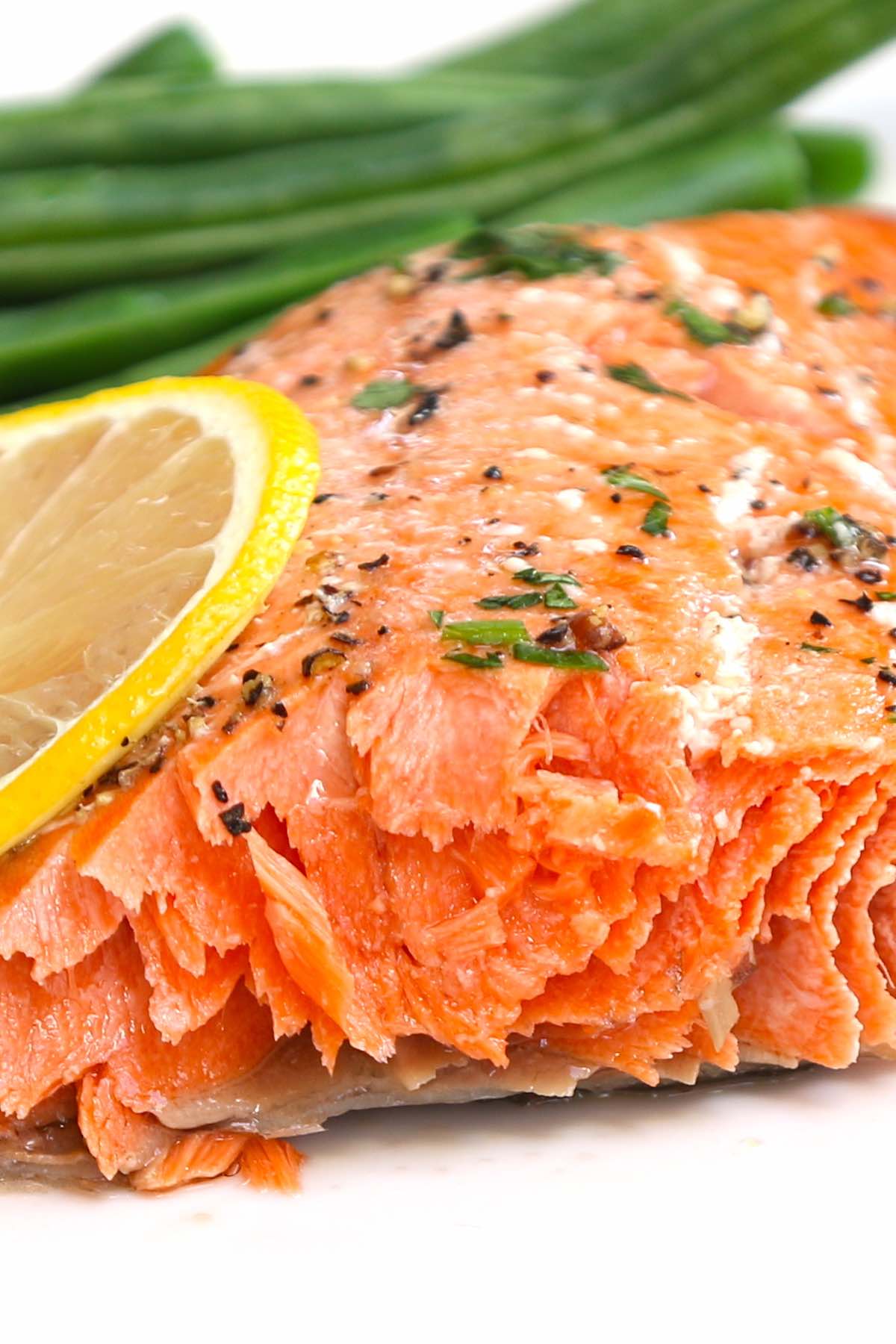
How Long Does It Take For Salmon to Cook at 375?
When baking salmon in the oven at 375°F, your fish will be ready in 10 to 20 minutes depending on thickness.
A thin fillet of sockeye will be done in as little as 10 minutes, while a thick 2-inch center cut of farmed salmon could take the full 20 minutes. Therefore, it’s best to start checking around the 10 minute mark. Read more about how long to bake salmon.
How to Tell When Salmon Is Done
Salmon flesh will change from a raw to translucent to opaque as it cooks. When salmon is done, it should be flakey and moist but not wet. There are several ways to check salmon doneness:
- The best way to check doneness is by inserting an instant-read thermometer into the middle of the thickest part. It should read 135 to 140°F in order to reach the safe minimum of 145°F after several minutes of rest before serving.
- The next best option is sliding the tines of a fork between two segments of flesh and twisting slightly to expose the center. When done, the flesh should be translucent and semi-firm (it will keep cooking for a few more minutes while resting to firm up a bit more). If the center looks raw, it will need more time.
- The last resort is the touch method. Press your fingertip lightly on the thickest section. It will spring back slightly when done, versus jiggling somewhat when still underdone. When overdone, it will be firm and resist your touch.
How to Cook Salmon in a Skillet
Ensure your salmon is completely thawed and pat dry with paper towel to remove excess moisture. Rub it with olive oil and season with salt and pepper. Preheat a nonstick skillet over medium-high heat for 2 to 3 minutes until hot. Add some oil and swirl around the pan to coat.
Using kitchen tongs, place the salmon skin-side up in the pan. Cook for 3 minutes and then flip using a fish spatula if you have one. Cook for 3 minutes more before checking doneness. Serve and garnish with fresh herbs, lemon juice and lemon slices.
How to Bake Salmon in the Oven
Preheat the oven to 375°F and turn on the convection / forced air if available. Place the oven rack into the upper middle position. Then line a rimmed baking sheet with parchment paper, which is essential to prevent sticking.
Ensure the salmon is completely thawed and pat dry with paper towels to remove excess moisture. Rub with olive oil and season with salt and pepper on all sides. Place the salmon skin-side down on the parchment. Top with lemon slices and herbs. Bake for 10 to 20 minutes depending on the thickness of your fillets, but start checking at the 10 minute mark.
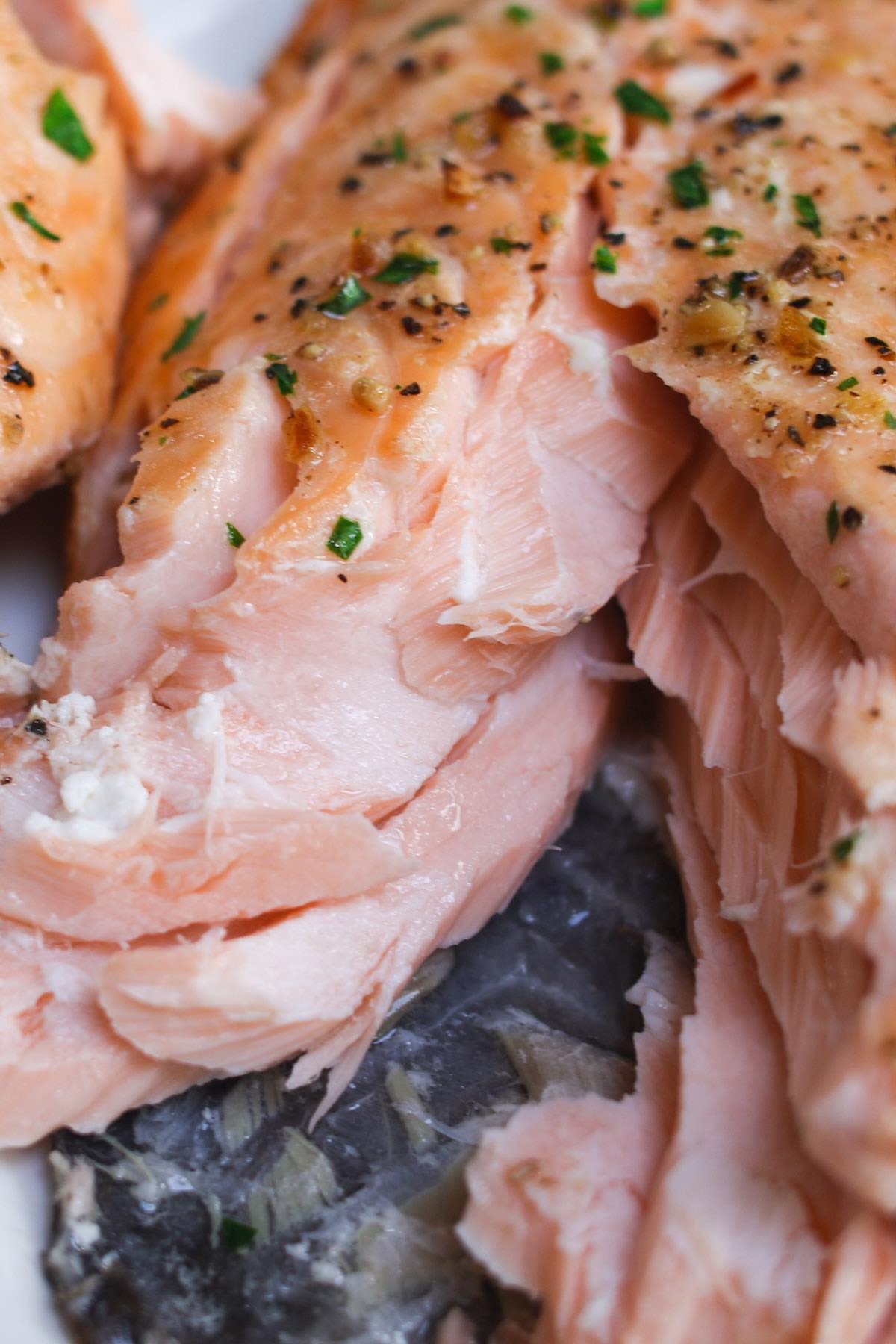
More Salmon Recipes:
How to Cook Salmon
Ingredients
- 1 pound salmon fillets
- 1 tablespoon olive oil
- ½ teaspoon salt
- ½ teaspoon black pepper, freshly ground
- lemon slices, (optional)
- fresh parsley, (optional), or other herbs
Instructions
- Optional: Remove from the fridge 30 minutes before cooking to take the chill off and promote even cooking.
- Place on a work surface and pat dry with paper towels to remove excess moisture. Rub with the oil, salt and pepper on all sides.
What Temp to Cook Salmon on Grill
- Preheat the grill to 375 to 400°F.
- Oil the grill grates thoroughly to minimize sticking.
- Place the salmon on the grill skin-side up and close the lid.
- Cook for 4 to 6 minutes depending on thickness. Open the lid and flip the salmon using a fish spatula. Close the lid and cook for 3 to 4 minutes more before starting to check doneness.
- Check doneness by inserting an instant-read thermometer into the thickest section and looking for 135°F for medium or 125°F for medium-rare. Alternatively, place a knife tip in the thickest section and twist slightly – the flesh should be slightly translucent.
- Remove to a serving plate using a fish spatula. Garnish with optional lemon and parsley and serve immediately.
What Temp to Cook Salmon in Oven
- Preheat the oven to 375°F, placing the oven rack in the upper middle position.
- Line a rimmed baking sheet with parchment or aluminum foil.
- Place the salmon skin-side down on the baking sheet and add optional lemon slices on top.
- Bake for 8-10 minutes to a medium-rare doneness, which is an internal temperature of 135°F (rising to 145°F after resting for 3 minutes). Check doneness by inserting an instant-read thermometer into the thickest section. Alternatively, place a knife tip in the thickest section and twist slightly – the flesh should be slightly translucent.
- Remove from the oven and place on a serving plate. If desired, you can remove the skin using a fish spatula.
- Garnish with optional lemon and parsley and serve immediately.
What Temp to Cook Salmon on Stove
- Place a large nonstick skillet on medium-high heat.
- When the pan is hot, add the oil. Using kitchen tongs, carefully place the salmon in the pan skin-side up, laying it away from you to minimize splatter.
- Cook for 4-8 minutes per side or until the internal temperature in the center reaches 135°F as measured with an instant-read thermometer (rising to 145°F after resting for 3 minutes).
- Remove to a serving plate. Garnish with optional lemon and parsley and serve immediately.
Notes
- Cooking Times: Note that cooking times are highly dependent on thickness of the salmon. For more details, read this post on how long to bake salmon.
- Albumen: During cooking, salmon will release a natural white residue called albumen. If you find it unappetizing, sprinkle fresh herbs and freshly ground black pepper on top to cover it up.
- Bones: Before cooking, you can run your fingertips across the surface to check for bones sticking out. Use tweezers or small tongs to grab ahold of any and pull up vertically to extract. Note that sockeye salmon tends to have fewer bones than other varieties.
Please read our nutrition disclaimer.
© TIPBUZZ. Images and text on this website are copyright protected. Please do not post or republish without permission. If you want to republish this recipe, please link back to this post. This post may contain affiliate links. Read the disclosure policy here.
